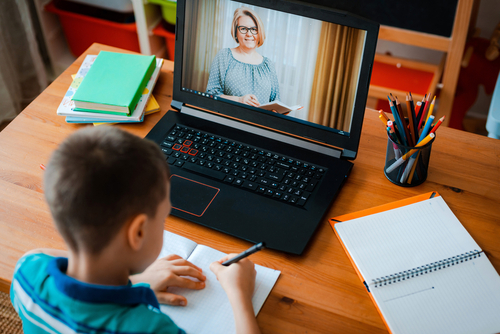All across the country, K-12 educators and staff are holding families hostage and threatening to strike (again) if schools open up in the Fall for kids to learn in person. They are claiming that it is not safe enough to teach, despite the fact that many districts are opening up to offer in person daycare services and are charging for the service. Parents and students that need an in-person learning option have become political pawns in the teacher union chess game to further their agenda.
If the unions and school shutdown lobby think they are winning the debate, they are sorely mistaken. With families getting their first glimpse of substandard online classroom instruction, parents are already sprinting out of their district school and opting for better alternatives. In states such as Arizona, where school choice is popular and plentiful, parents easily have other options.
As consumers, we are well accustomed to the luxuries of customization and flexibility. In fact, we have come to expect it in almost every realm of goods and services. Yet when it comes to education parents don’t realize they have a right to demand these features for their children.
Families should have a market of options in which they consider the unique aptitude, learning style and interests of their child. Organizations and school choice advocates have been working for years to advance innovation and diversity in education and to question the top-down system of the status quo. Additional demand from Covid-19 and opportunistic teacher unions is likely to expedite the revolution of educational options in Arizona.
Microschools
Just as it sounds, microschools are small learning environments between 8 – 10 students that blend homeschooling with an in-class community environment. In Arizona, this concept has been popularized by the company Prenda whose goal was to create a learning environment that was self-guided and fueled by a child’s own enthusiasm for learning. Prenda created an online platform that has made its model for learning accessible to students across the state. Even in the most isolated and economically challenged areas of the state, such as the Apache Reservation, a microschool has popped up and is serving a small number of tribal students who would have had no other option but failing district schools.
Homeschooling
Though certainly not a new concept, homeschooling is quickly gaining popularity. Many parents who were thrust into “being the teacher” at the end of the 2020 school year have discovered they are rather good at it and are opting this year to take on the role full time. In fact, in Maricopa County the number of families opting to homeschool their children this Fall has tripled over last year.
Pandemic Pods
Similar to microschools, parents are also forming “pandemic pods” for children in their families and neighborhoods; small groups of kids taught under either a parent or paid teacher or tutor. This allows families to pool their resources and share the costs of a more personalized education. Companies from Manhattan to San Francisco have popped up to facilitate the matching of families with tutors and teachers; a similar model that already exists with nanny agencies. This model has raised concerns over equity – how do children in families with limited resources and means ensure they still receive a quality education?
Right now, parents are figuring all this out on their own. Policymakers could help.
Expanded Empowerment Scholarship Accounts
Arizona already has a vehicle set up for “backpack funding,” a finance system for education that follows the student no matter what educational option they choose. Currently Empowerment Scholarship Accounts are only open to certain qualifying students – such as for children with disabilities, in the bounds of schools rated a ‘D’ or ‘F’, children of military persons or tribal children.
The legislature should expand this program for the COVID-19 pandemic. Doing so would allow all families struggling with the difficult educational choices right now to access needed funds to tailor an education best for their child in this chaotic environment. This could be done at a fraction of the cost of traditional district school funding.
These models are the tip of the iceberg. As families, educators and policymakers navigate what education looks like during the current pandemic; this is an even greater opportunity to explore how to revamp archaic school finance systems, outdated education models, and make parents expert consumers of educational options.


Recent Comments